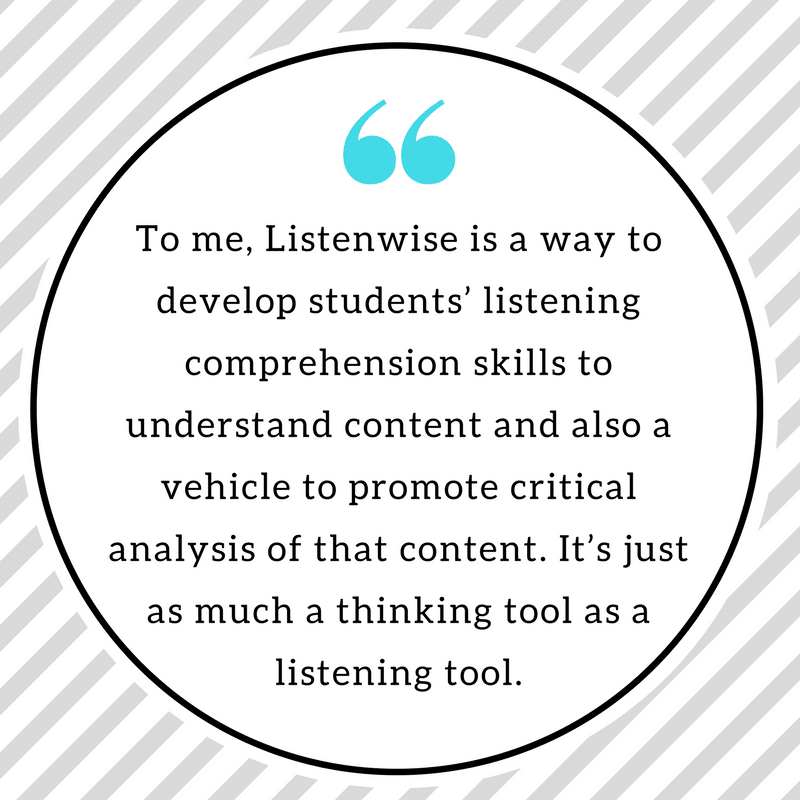Last Updated on June 25, 2021
We hope you have been having a great summer!
 We are busy planning for back-to-school, listening to tons of NPR stories, and reflecting on how many awesome educators we are privileged to work with everyday. During the year we like to spotlight rockstar teachers in our Sunday newsletter, but today we highlight Jim Bentley in more depth. Jim teaches in the Elk Grove Unified School District in California where he loops from 5th to 6th grade with his students. Learn more about how he teaches with Listenwise below, and connect with him on Twitter @Curiosity_Films.
We are busy planning for back-to-school, listening to tons of NPR stories, and reflecting on how many awesome educators we are privileged to work with everyday. During the year we like to spotlight rockstar teachers in our Sunday newsletter, but today we highlight Jim Bentley in more depth. Jim teaches in the Elk Grove Unified School District in California where he loops from 5th to 6th grade with his students. Learn more about how he teaches with Listenwise below, and connect with him on Twitter @Curiosity_Films.
What do you like about using Listenwise?
Today more than ever students need to learn how to navigate through multiple forms of information. No longer are we limited to learning in a classroom with a book. We live in an era where we can “Google” just about anything and find the written word on blogs or websites, the spoken word in videos or podcasts, or a mix of the two on a variety of other multimedia sources replete with charts, graphs, infographics.
To me, Listenwise is a way to develop students’ listening comprehension skills to understand content and also a vehicle to promote critical analysis of that content. It’s just as much a thinking tool as a listening tool.

What is your listening routine in the classroom?
I find I like to use Listenwise as a tool to accompany a piece of text. The text might precede the Listenwise piece, or vice versa. By pairing the listening to reading, students can turn to multiple sources of information when responding to written or discussion prompts. That’s a life skill in addition to connecting to more than one Common Core Standard.
Which Listenwise stories integrated well into your curriculum?
I found an article, Cleaning Carbon From Our Air, that my students listened to as part of a larger unit on climate change. It was powerful for them to hear an interview with a climate scientist to reveal how 9 petagrams of carbon are produced by people annually. That’s an amount equivalent to a coal train circling the planet 54 times! That had a huge impact on my students who were questioning whether humans could really be affecting an entire planet’s atmosphere.
What advice would you give to teachers getting started?
PRACTICE listening! It’s harder than it seems. I listen to NPR in my car exclusively, but when I’m close listening to a Listenwise piece, it’s a different ball game. We need to model the process aloud and visibly for students. And we need to help students understand that it’s okay to replay something 2 or 5 times and not just rely on our memory.
Do you have teaching advice to share? If you want to tell your story in a teacher spotlight, email info@listenwise.com.
